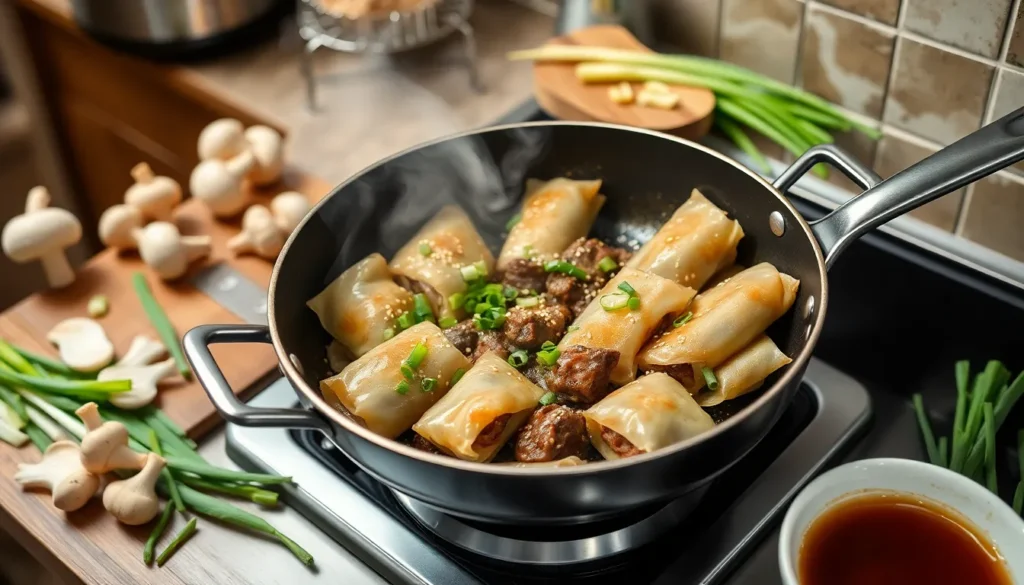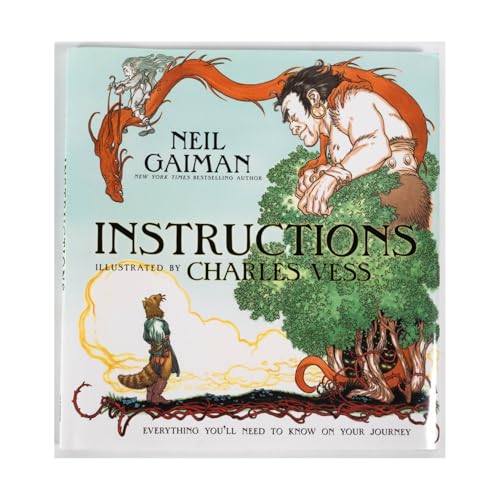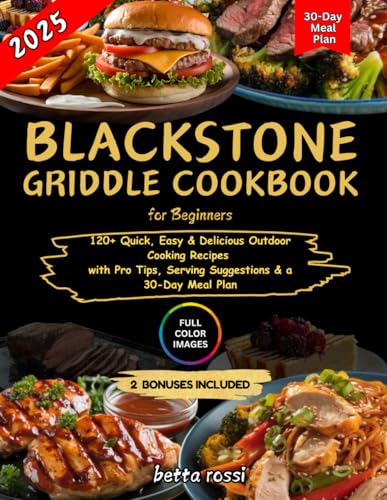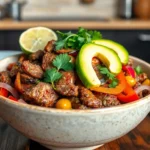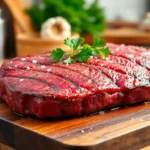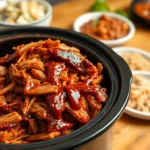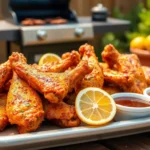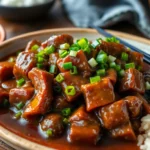We’ve discovered one of the most satisfying ways to transform tender beef and delicate enoki mushrooms into a restaurant-quality dish that’ll have your family asking for seconds. This beef enoki mushroom recipe combines the rich umami flavors of perfectly seasoned beef with the subtle crunch and earthy taste of fresh enoki mushrooms.
What makes this dish truly special is how quickly it comes together – we’re talking about a complete meal in under 20 minutes. The enoki mushrooms absorb all the savory flavors while maintaining their unique texture, creating the perfect complement to juicy beef strips.
Whether you’re looking for a weeknight dinner solution or want to impress guests with an elegant Asian-inspired dish, this recipe delivers on both flavor and presentation. We’ll show you exactly how to achieve that perfect balance of textures and create a meal that’s both nutritious and incredibly delicious.
Ingredients
We’ve carefully selected fresh ingredients that create the perfect harmony of flavors and textures in this dish. Our ingredient list is organized by component to help you prepare everything efficiently before cooking begins.
For the Beef
- 1 pound beef sirloin or flank steak, sliced thin against the grain
- 2 tablespoons cornstarch
- 1 tablespoon soy sauce
- 1 teaspoon sesame oil
- 1/2 teaspoon black pepper
- 1/4 teaspoon salt
For the Enoki Mushrooms
- 2 packages (7 ounces each) fresh enoki mushrooms, roots trimmed
- 2 tablespoons vegetable oil
- 3 cloves garlic, minced
- 2 green onions, chopped (white and green parts separated)
- 1 tablespoon fresh ginger, grated
For the Sauce
- 3 tablespoons soy sauce
- 2 tablespoons oyster sauce
- 1 tablespoon rice wine or dry sherry
- 1 teaspoon sugar
- 1/2 teaspoon sesame oil
- 1/4 cup beef broth or water
- 1 teaspoon cornstarch mixed with 2 teaspoons water (slurry)
Equipment Needed

Creating our beef enoki mushroom dish requires the right tools to ensure smooth preparation and perfect results. We recommend gathering these essential pieces of equipment before starting our cooking process.
Our primary cooking vessel should be a large skillet or frying pan measuring 11 to 12 inches in diameter. This generous size allows us to arrange our beef rolls in a single layer without overcrowding, ensuring even cooking throughout. The wide surface area also provides ample space for our sautéed onions and beaten eggs.
We need a small mixing bowl or measuring cup for combining our sauce ingredients. This container helps us whisk together the dashi stock, soy sauce, mirin, and black pepper until the sugar dissolves completely, creating our flavorful cooking liquid.
Sharp preparation tools are crucial for this recipe. A knife and cutting board enable us to slice our onions thinly and trim the enoki mushroom root ends with precision. Clean cuts ensure our mushrooms separate into neat bunches and our onions cook evenly.
Chopsticks or tongs become invaluable for handling our delicate beef rolls during cooking. These tools allow us to arrange the rolls carefully in the pan without damaging their shape or causing the mushrooms to fall out.
| Equipment | Purpose | Size/Specification |
|---|---|---|
| Skillet/Frying Pan | Primary cooking vessel | 11-12 inches diameter |
| Mixing Bowl | Sauce preparation | Small size |
| Knife | Slicing ingredients | Sharp blade |
| Cutting Board | Food preparation surface | Standard size |
| Chopsticks/Tongs | Handling beef rolls | Heat-resistant |
Having these tools ready before we begin ensures our 20-minute cooking process flows smoothly from preparation through plating.
Preparation
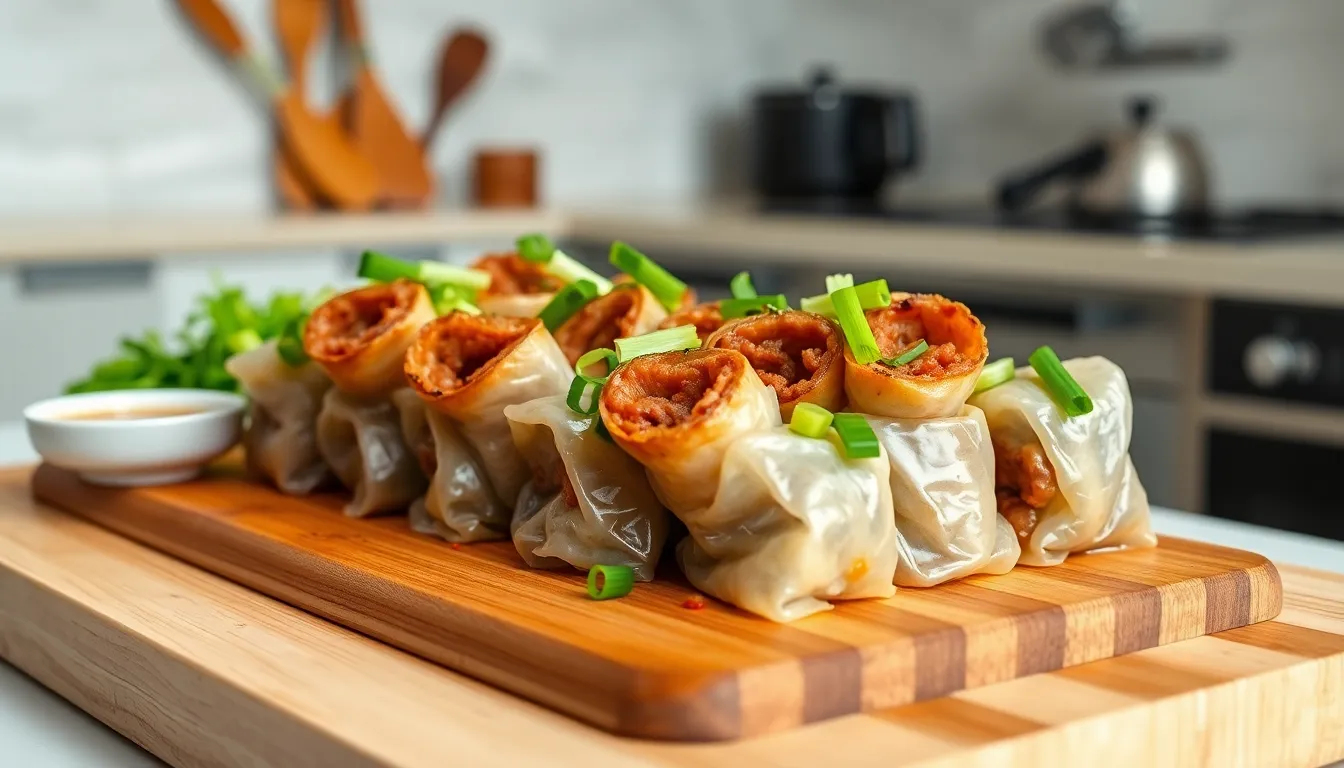
Proper preparation sets the foundation for perfect beef enoki mushroom rolls with balanced flavors and optimal texture. We’ll break down each component to ensure seamless execution.
Preparing the Beef
We start by selecting thinly sliced beef such as rib eye or striploin for optimal tenderness and flavor. Lay out the beef slices on a clean work surface and create a marinade using soy sauce, sake, mirin, minced ginger, minced garlic, and sesame oil.
Brief marination enhances the depth of flavor significantly. We recommend marinating the beef for 30 minutes in the refrigerator for maximum umami development. This step remains optional but delivers noticeable taste improvements.
Position two small clumps of cleaned enoki mushrooms on each beef slice with mushroom caps visible on both ends. Roll the beef tightly around the mushrooms diagonally to ensure even coverage and secure wrapping.
Cleaning the Enoki Mushrooms
Begin by trimming the base end of each enoki mushroom cluster while leaving enough roots to maintain cluster integrity. We preserve just enough of the root system to keep the small mushroom clumps together during cooking.
Soak the trimmed enoki bunches briefly in lukewarm salted water to soften the mushrooms and enhance their natural flavor. Drain the mushrooms thoroughly after soaking to remove excess moisture before rolling.
Making the Sauce
Create a savory umami rich sauce by combining dashi broth, soy sauce, and mirin or sugar in a small bowl. Add a pinch of black pepper to balance the sweetness and saltiness for optimal flavor harmony.
Heat sesame oil in your large skillet and caramelize thinly sliced yellow onions until they become soft and translucent. Add the prepared beef rolls to the pan and pour the sauce mixture over them.
Cover the skillet with a lid and cook for several minutes to allow flavors to meld while ensuring even beef cooking. Drizzle beaten eggs over the cooking rolls and sauce during the final minutes of cooking.
Simmer until the eggs set completely to create a silky finish that binds all components together beautifully.
Instructions
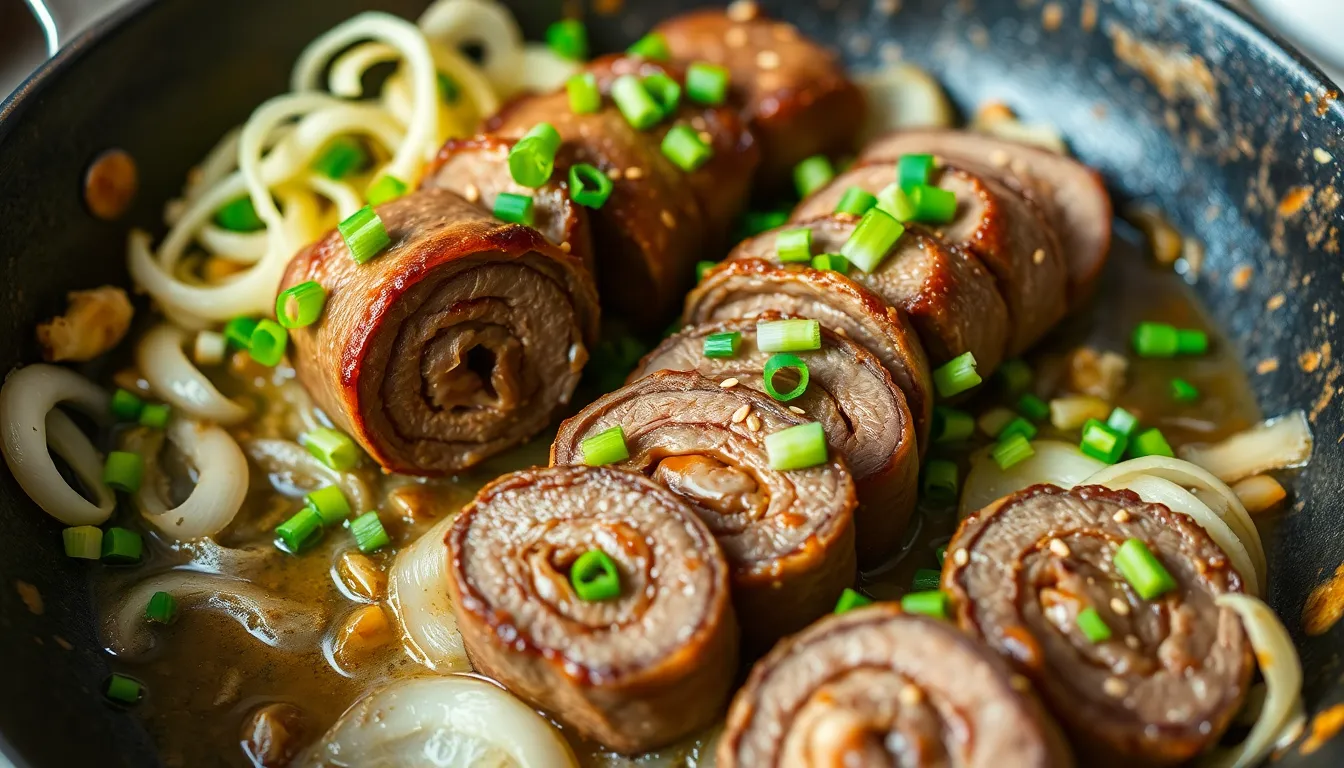
Now that we have prepped our ingredients and assembled our equipment, let’s jump into the cooking process that transforms these simple components into an extraordinary dish. Follow these step-by-step instructions to create perfectly tender beef rolls with delicate enoki mushrooms.
Cooking the Beef
We begin by laying each thin slice of beef flat on our clean cutting board. Place two small clumps of enoki mushrooms (about ½ to ¾ inch wide) on each beef slice, positioning them to face opposite directions so mushroom caps appear on both ends of the finished roll. Roll the beef tightly around the mushroom clumps on a slight diagonal to ensure even coverage of the mushrooms.
Heat neutral oil or sesame oil in our large skillet over medium heat until it shimmers. Carefully place the beef rolls seam-side down in the hot pan. Brown the rolls thoroughly by rotating them every 2-3 minutes to ensure all sides develop an even golden sear. This browning process typically takes 6-8 minutes total and creates the foundation of flavor for our dish.
Adding the Enoki Mushrooms
We prepare our enoki mushrooms by trimming 1-2 inches off the base or root end using sharp kitchen shears. Rinse the trimmed mushrooms under cold running water to remove any debris. Separate the cleaned enoki into small clumps that will fit comfortably within our beef slices.
For enhanced flavor, we soak these mushroom clumps briefly in lukewarm salted water. This optional step softens the mushrooms and infuses them with subtle seasoning that complements the beef beautifully. Drain the mushrooms thoroughly before using them in our rolls.
Combining and Final Cooking
After browning our beef rolls, we create a bed of sautéed onions by cooking sliced yellow or white onions in the same pan for 4-5 minutes until softened. Place the browned beef rolls on this aromatic onion base.
Pour our prepared savory sauce (combining soy sauce, mirin, sake, dashi stock, sugar, and black pepper) evenly over the beef rolls. Cover the pan with a lid and let the mixture simmer for 3-5 minutes until the mushrooms inside become tender and absorb the flavorful sauce.
Remove the lid and pour beaten eggs over the simmering rolls in a steady stream. Cover again and cook for an additional 1-3 minutes until the eggs are slightly set but still silky. Garnish with chopped green onions and sesame seeds before serving hot over steamed white rice for a complete meal that’s ready in about 20 minutes.
Serving Suggestions
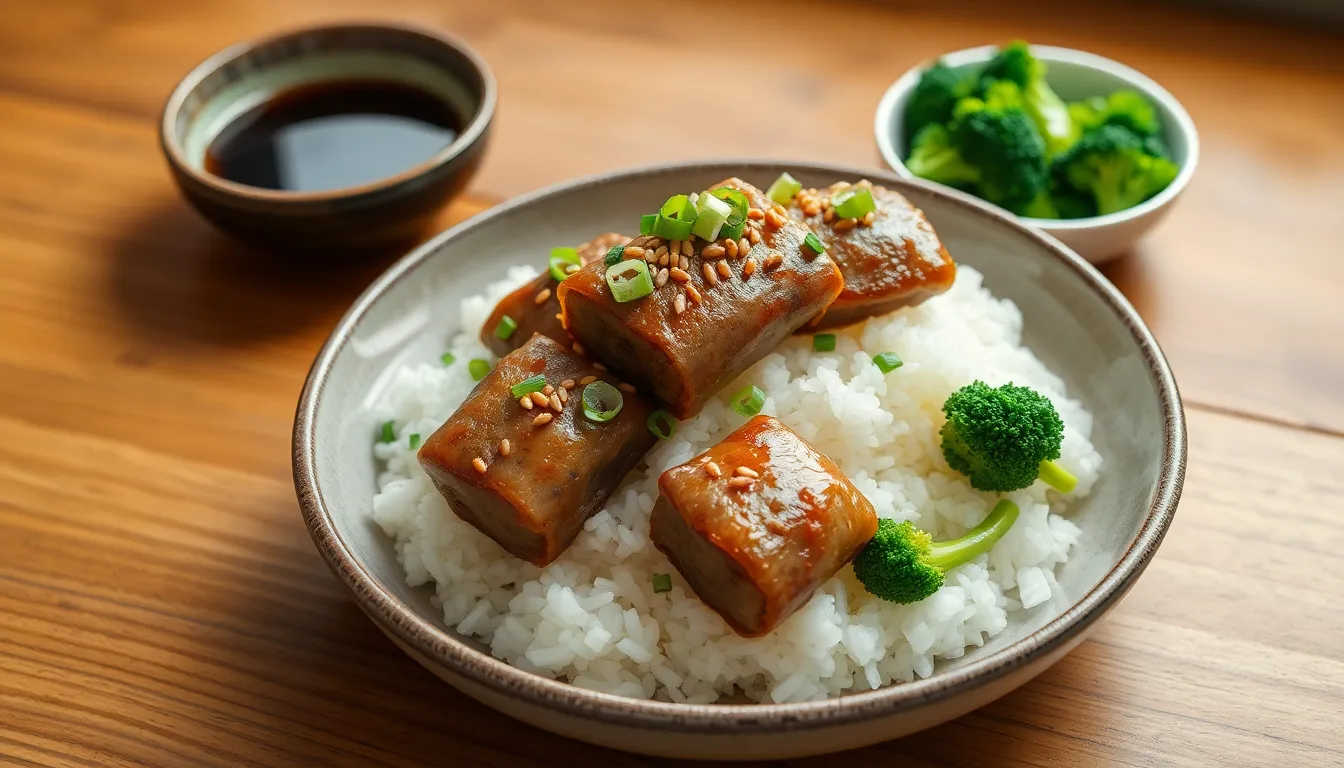
We recommend serving our beef enoki mushroom rolls over steamed white rice to create the perfect foundation for this savory dish. The fluffy rice absorbs the delicious sauce and provides a neutral base that allows the rich flavors of the beef and mushrooms to shine through.
Fresh garnishes elevate the presentation and add textural contrast to each bite. We sprinkle chopped green onions and toasted sesame seeds over the finished rolls for added flavor and visual appeal. These simple additions provide a pop of color and complement the umami-rich sauce beautifully.
Light vegetable sides create a well-balanced meal that won’t overpower the main dish. We suggest pairing the beef rolls with steamed broccoli or a crisp cucumber salad to add freshness and crunch. These vegetables provide a cooling contrast to the warm savory flavors of the beef and mushrooms.
Traditional Japanese accompaniments round out the dining experience and create an authentic meal. We recommend serving a small bowl of miso soup alongside the beef rolls to enhance the Japanese inspired flavors. Pickled vegetables also make an excellent addition as they provide a tangy contrast that cleanses the palate between bites.
The complete meal comes together in under 30 minutes when you include the rice preparation time. We find this combination creates a satisfying dinner that feels both comforting and sophisticated enough for entertaining guests. The rich umami flavors from the beef and mushrooms paired with the silky egg finish make this dish memorable for any occasion.
Storage and Reheating
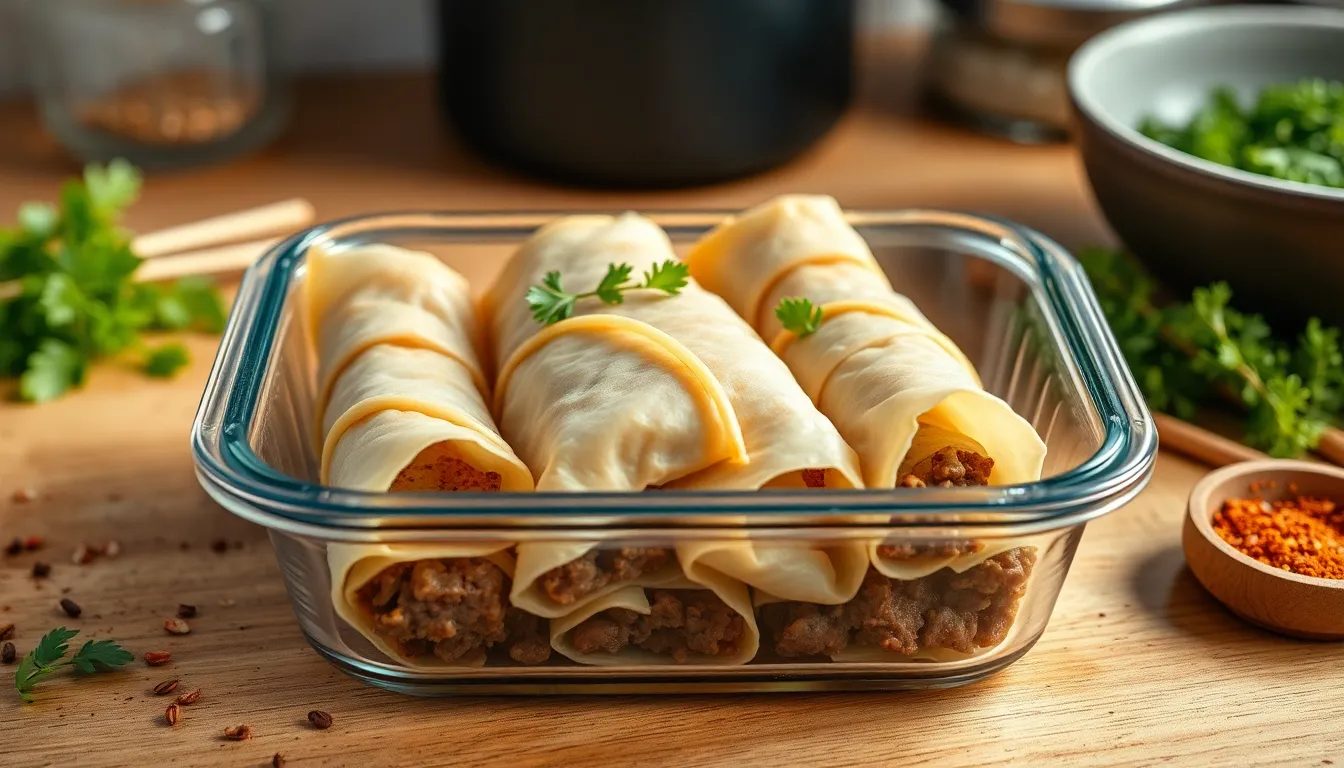
We can easily store leftover beef enoki mushroom rolls to enjoy another day. Our delicious creation keeps well in an airtight container in the refrigerator for up to 4 days according to food safety guidelines. We recommend transferring the cooled dish to a glass or plastic container with a tight-fitting lid to maintain freshness and prevent any flavors from mixing with other foods.
Proper Storage Method
When storing our beef enoki rolls, we should allow them to cool completely at room temperature before refrigerating. This prevents condensation from forming inside the container which could make the dish soggy. We can portion the rolls into individual serving sizes for convenient reheating later.
Reheating Instructions
| Reheating Method | Time | Temperature | Instructions |
|---|---|---|---|
| Microwave | 2-3 minutes | Medium power | Cover and heat in 30-second intervals |
| Stovetop | 5-7 minutes | Medium heat | Add splash of water or broth if needed |
We have two effective options for reheating our stored beef enoki rolls. The microwave method works best for quick meals – we simply cover the container and heat for 2-3 minutes on medium power. For better texture retention, we prefer reheating on the stovetop over medium heat for 5-7 minutes until heated through.
Important Storage Considerations
Freezing these beef enoki rolls is not recommended because enoki mushrooms become mushy after thawing. The delicate texture that makes our dish so appealing gets compromised during the freezing process. We always suggest consuming the leftovers within the 4-day refrigerated storage window for optimal taste and texture.
Our beef enoki mushroom rolls taste nearly as good reheated as they do fresh, making this recipe perfect for meal prep or enjoying delicious leftovers throughout the week.
Recipe Variations
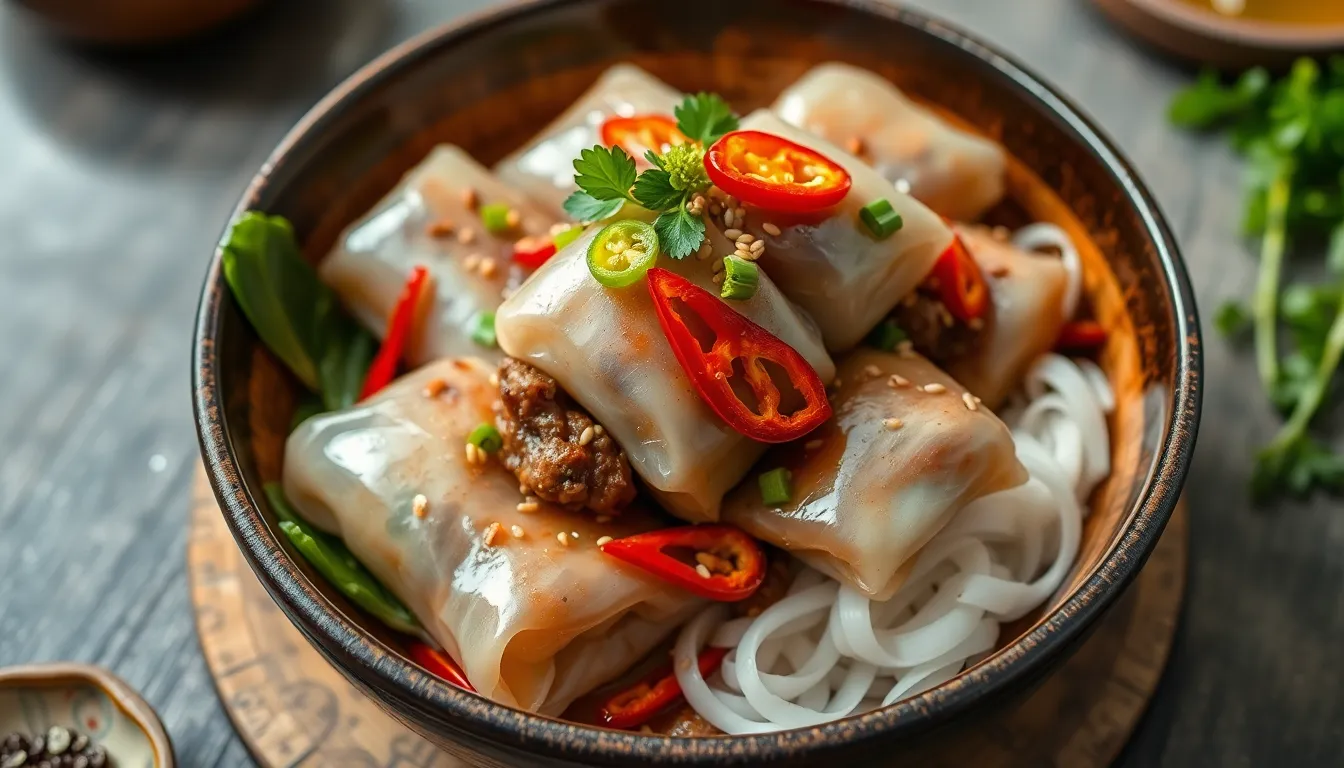
We can transform our basic beef enoki mushroom recipe into exciting new flavors by incorporating different ingredients and cooking techniques. These variations maintain the dish’s 20-minute preparation time while offering diverse taste profiles to suit different preferences.
Spicy Beef Enoki Mushrooms
We add heat to our beef enoki rolls by incorporating chili paste or chili oil directly into the savory sauce. Mix 1-2 tablespoons of gochujang or sriracha with our traditional soy sauce base for a Korean-inspired kick. Fresh chopped chili peppers can be sautéed with the onions to build layers of heat throughout the dish.
We garnish the finished rolls with sliced fresh chilies and serve alongside a spicy dipping sauce made from soy sauce, rice vinegar, and chili oil. This variation enhances the umami flavors while providing a satisfying heat that complements the tender beef and crunchy enoki mushrooms perfectly.
Asian-Style with Soy Sauce
Our traditional approach leverages authentic Japanese and Korean flavor profiles through carefully balanced sauce ingredients. We combine dashi stock with soy sauce, mirin, and a touch of sugar to create the quintessential Asian taste experience. Sesame oil replaces neutral cooking oil for deeper aromatic complexity.
We simmer the beef rolls in this savory sauce until the liquid reduces slightly and coats each roll beautifully. The final dish gets garnished with toasted sesame seeds and chopped green onions, creating the perfect balance of salty and subtly sweet flavors that define authentic Asian cuisine.
Garlic Butter Version
We create a rich Western twist by cooking our beef rolls in fragrant garlic butter instead of oil. Melt 3 tablespoons of butter with 4 minced garlic cloves until the mixture becomes aromatic and golden. This method adds creamy richness that contrasts beautifully with the delicate enoki mushrooms.
We sear the beef rolls in this garlic butter base, then add a splash of soy sauce or fresh lemon juice to brighten the flavors. The butter creates a luxurious coating on each roll while the garlic infuses every bite with aromatic depth that transforms our traditional recipe into an indulgent treat.
Tips for Best Results
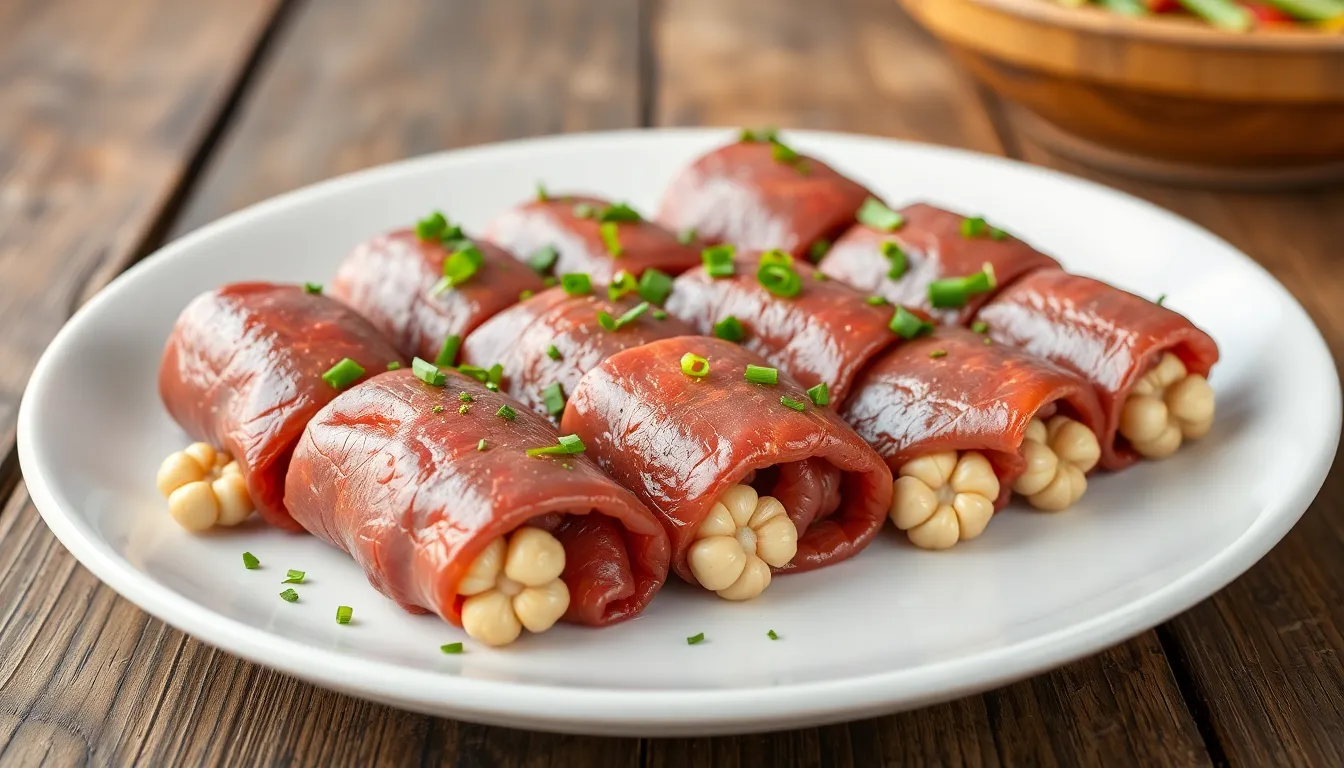
We recommend selecting very thinly sliced beef to ensure quick and even cooking without developing any toughness. The beef should be no thicker than 1/8 inch for optimal results. Rib eye and striploin work exceptionally well due to their natural tenderness and marbling.
Keep the mushroom bunches small when preparing your rolls. Each bundle should contain only 10-12 enoki mushrooms to make rolling easier and create more compact rolls. Trim the root end cleanly to prevent the mushrooms from falling apart during cooking.
Simmer the beef rolls gently over medium heat rather than high heat. This gentle cooking method prevents the beef from becoming tough while allowing all the flavors to meld beautifully together. Overcooking will result in chewy beef and mushy mushrooms.
Add the beaten eggs during the final 2-3 minutes of cooking for the perfect silky texture. Pour the eggs evenly over the rolls and resist the urge to stir them aggressively. Let them set naturally to create that characteristic tender finish.
Roll the beef tightly around the mushrooms with the mushroom tips exposed for the most attractive presentation. The exposed tips not only look appealing but also allow the mushrooms to cook evenly while absorbing the savory sauce.
Prepare all your ingredients before you start cooking since this dish comes together quickly. Having everything measured and ready ensures smooth execution during the 20-minute cooking process.
Serve the rolls immediately while they’re hot to enjoy the optimal texture contrast between the tender beef and crisp mushrooms. The dish is best when the eggs are still silky and the broth is steaming.
Use a wide skillet or pan to cook the rolls in a single layer. Overcrowding the pan will cause uneven cooking and prevent proper browning of the beef rolls.
Conclusion
We’ve shown you how to create a restaurant-quality beef enoki mushroom dish that’s both impressive and incredibly simple to make. This versatile recipe adapts beautifully to your taste preferences and dietary needs while maintaining its delicious core flavors.
The combination of tender beef and delicate enoki mushrooms creates a satisfying meal that works perfectly for busy weeknights or special occasions. With proper preparation and our tested techniques you’ll achieve professional results every time.
Whether you stick to the classic version or experiment with our suggested variations this dish will quickly become a favorite in your cooking repertoire. The quick cooking time and minimal cleanup make it an ideal choice for anyone looking to expand their culinary skills without spending hours in the kitchen.
Frequently Asked Questions
What type of beef is best for beef enoki mushroom rolls?
Use thinly sliced sirloin, flank steak, rib eye, or striploin cut no thicker than 1/8 inch. Thin slicing ensures the beef cooks quickly and remains tender. The meat should be sliced against the grain for optimal texture and easy rolling around the enoki mushrooms.
How long does it take to make beef enoki mushroom rolls?
The entire recipe can be completed in under 20 minutes from preparation to serving. This includes marinating the beef briefly, preparing the mushrooms, rolling, cooking, and plating. Having all ingredients prepped beforehand ensures a smooth and quick cooking process.
Can I store and reheat leftover beef enoki mushroom rolls?
Yes, store leftovers in an airtight container in the refrigerator for up to 4 days. Reheat using microwave for quick meals or stovetop for better texture retention. Avoid freezing as enoki mushrooms become mushy when thawed.
What should I serve with beef enoki mushroom rolls?
Serve over steamed white rice to absorb the savory sauce. Complement with light vegetable sides like steamed broccoli or cucumber salad. Traditional Japanese accompaniments such as miso soup and pickled vegetables enhance the dining experience perfectly.
How do I prepare enoki mushrooms for this recipe?
Clean enoki mushrooms by trimming their bases and separating them into small bunches. Soak in lukewarm salted water briefly to enhance flavor. Keep mushroom bunches small for easier rolling and better cooking results in the beef rolls.
What variations can I make to this recipe?
Try a spicy version by adding chili paste to the sauce, an Asian-style variation using dashi stock and mirin, or a garlic butter version for a Western twist. Each variation maintains the 20-minute cooking time while offering different flavor profiles.
What equipment do I need to make this dish?
You’ll need a large 11-12 inch skillet for even cooking, a small mixing bowl for sauce preparation, sharp knife and cutting board for ingredient prep, and chopsticks or tongs for handling delicate beef rolls during cooking.
How do I prevent the beef from becoming tough?
Use very thinly sliced beef, marinate briefly for flavor, and cook over medium heat with gentle simmering. Avoid high heat which can make the beef tough. Add beaten eggs during final minutes for a silky texture that helps tenderize the dish.

